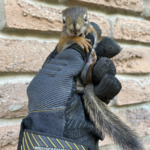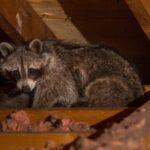Raccoons are known for their adaptability and their ability to survive in a variety of environments. In the wild, raccoons are opportunistic eaters and will consume a wide range of food sources, including plants, insects, and small animals. However, during the winter months, raccoons have to adapt to survive in colder weather and may need to consume more food to maintain their body weight and energy levels.
One reason why raccoons may eat more leading up to winter is to build up their fat reserves. Raccoons have a thick layer of fat under their skin that acts as insulation against the cold. By eating more during the fall, raccoons can increase their body fat levels and better prepare for the colder months ahead.
In addition, food sources may be more scarce during the winter, so raccoons may eat more in the fall to compensate for the potential lack of food availability. Raccoons are intelligent animals and will use their keen senses and problem-solving skills to find food during the winter, but having a full belly in the fall can help them weather any potential food shortages.
Raccoons may also be more active during the fall as they search for mates and establish territories. This increased activity can lead to higher food intake, as raccoons need to fuel their bodies for the extra activity.
In conclusion, raccoons may eat more leading up to winter for a variety of reasons, including building up fat reserves, preparing for potential food shortages, and supporting increased activity levels. By adapting to the changing seasons, raccoons are able to survive and thrive in their environment.









